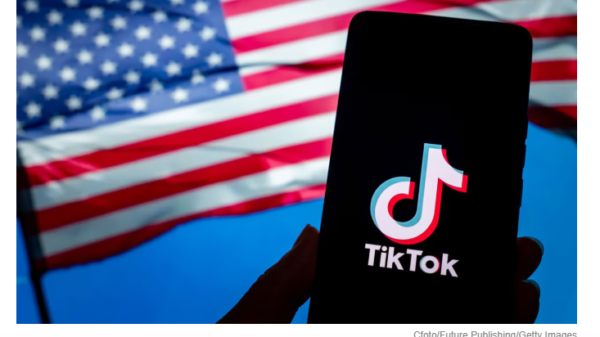Transforming Customers Into Brand Advocates and Ambassadors
“Imagine your customers willingly becoming your brand’s most persuasive salesforce. Welcome to the world of brand advocacy, where trust and authenticity reign supreme.”
Key Takeaways:
- Trust and Credibility: People trust friends’ recommendations more than ads.
- Cost-effective: Advocates promote your brand without costly ads.
- Know Your Customers: Find potential advocates by understanding your customer groups.
- Behavior Matters: Advocate candidates show brand love through actions.
In the dynamic realm of modern marketing, where consumers wield more influence than ever, one term has risen to prominence: brand advocacy. It’s not just a buzzword; it’s a powerful force that can catapult a brand’s success to new heights. In this age of information overload and ever-evolving consumer preferences, turning customers into brand advocates and ambassadors is a strategic move and a necessity for businesses aiming to thrive.
At its core, brand advocacy is about more than just promoting a product or service; it’s about creating a community of passionate supporters who genuinely believe in what a brand represents. These advocates buy your products or services and sing your praises to friends, family, and even strangers. They become the trusted voices that potential customers turn to when making decisions.
But what exactly is brand advocacy, and why does it matter in today’s competitive landscape? In this exploration, we will dive deep into the concept of brand advocacy, dissect its significance, and uncover the strategies that can transform ordinary customers into genuine brand ambassadors.
In an era where traditional advertising has lost some of its luster, the voice of the customer has gained immense power. Social media platforms, online review sites, and forums have become consumers’ go-to sources of information. They seek authentic experiences and opinions from those who have walked the path before them. This shift in consumer behavior has placed brand advocacy at the forefront of marketing strategies.
The journey from a satisfied customer to a brand advocate and, ultimately, a brand ambassador is a compelling narrative that benefits businesses and enriches the customer’s experience. It’s a story of trust, loyalty, and shared values.
Why Brand Advocacy Matters
In an era marked by a cacophony of marketing messages and an ever-expanding digital landscape, brand advocacy stands out as a beacon of authenticity and influence. It’s not just a nice-to-have component of your marketing strategy; it’s a game-changer. In this section, we’ll explore why brand advocacy matters and its pivotal role in shaping the success of modern businesses.
The Value of Word-of-Mouth Marketing
Trust and Credibility
When making decisions, whom do you trust more: a persuasive advertisement or a recommendation from a close friend? The answer is likely to be the latter. Trust is the bedrock of brand advocacy and is the driving force behind its efficacy.
Think about it: when a friend or family member recommends a product or service, they are vouching for it. Their recommendation carries weight because it’s rooted in a genuine experience devoid of ulterior motives. This trustworthiness is the secret sauce that makes brand advocacy so potent. It transcends the skepticism often associated with traditional advertising and fosters a connection beyond the transactional.
Moreover, recommendations from peers often come with a sense of accountability. Advocates know their reputation is on the line when they endorse a brand. This intrinsic accountability leads to more considered and honest endorsements, further enhancing trust and credibility.
Cost-Effective Marketing
In the ever-competitive marketing world, budgets are finite, and pursuing cost-effective strategies is paramount. This is where brand advocacy shines as a cost-efficient powerhouse.
Unlike traditional advertising, which demands substantial financial resources, brand advocacy relies on the enthusiasm of your existing customers. These advocates willingly share their positive experiences without a paycheck, serving as unpaid ambassadors for your brand. Their testimonials and recommendations become invaluable marketing assets, cutting your advertising spend.
Furthermore, consider the reach of word-of-mouth marketing. A single advocate can potentially introduce your brand to a network of individuals far larger than any advertising budget could reach. It’s a snowball effect where one satisfied customer can trigger a chain reaction of new customers. This organic growth is cost-effective and sustainable as it builds a loyal customer base.
In summary, brand advocacy matters because it leverages trust and credibility to create a ripple effect of cost-effective marketing. It’s a testament to the power of authentic connections in an era dominated by digital noise.
Now that we’ve grasped the significance of brand advocacy, let’s explore how to identify potential advocates among your customer base. This process involves understanding your customers deeply and recognizing the traits that signify brand affinity.
Identifying Potential Advocates
Understanding Your Customer Base
Customer advocacy begins with a profound understanding of your customer base. Not all customers are created equal regarding advocacy potential, and identifying the right individuals is crucial. This starts with customer segmentation.
Customer Segmentation
Segmenting your customer base allows you to categorize individuals based on various criteria, such as demographics, purchase behavior, and engagement level. Doing so lets you pinpoint the segments most likely to become advocates. For example, long-time loyal customers who regularly engage with your brand are prime candidates for advocacy.
Segmentation also helps tailor your advocacy strategies to each group’s unique needs and preferences. It’s not a one-size-fits-all approach; it’s about crafting personalized experiences that resonate with specific segments of your audience.
Building Strong Customer Relationships
In brand advocacy, the journey from satisfied customer to enthusiastic brand advocate hinges on the foundation of strong customer relationships. In this section, we delve into the essential elements of exceptional customer service, going above and beyond to exceed expectations, and the role of personalization in fostering unwavering customer loyalty.
Exceptional Customer Service
Going Above and Beyond
Exceptional customer service is the bedrock upon which brand advocacy is built. It’s not merely about meeting customer expectations; it’s about surpassing them in ways that resonate and leave a lasting impression. Here are some strategies for going above and beyond:
Active Listening: Truly understanding your customers requires active listening. Pay close attention to their needs, concerns, and feedback. When customers feel heard and valued, they’re more likely to become advocates.
Timely Responses: Speed matters in today’s fast-paced world. Respond promptly to customer inquiries and concerns, demonstrating your commitment to their satisfaction.
Personalized Interactions: Tailor your interactions to each customer’s individual preferences and history. Personalization shows that you view them as unique and valued.
Problem Solving: When issues arise, view them as opportunities to showcase your commitment to customer satisfaction. Solve problems swiftly and efficiently, turning potential detractors into advocates through your responsiveness.
Surprise and Delight: Occasionally, surprise your customers with unexpected gestures of appreciation, such as personalized thank-you notes, exclusive offers, or small gifts. These surprises create memorable moments that spark advocacy.
Personalization
Personalization is the magic wand of customer loyalty. It’s about curating experiences that resonate with each customer personally. Here’s how personalization fosters loyalty:
Tailored Recommendations: Analyze customer data to provide product or content recommendations that align with their preferences and past behavior.
Customized Communication: Send personalized emails, messages, or offers addressing each customer’s interests and needs.
Anticipate Needs: Use predictive analytics to anticipate customer needs and offer solutions before they even realize they need them.
Remember details: Show that you remember and value your customers by referencing their past interactions and purchases.
Consistency Across Channels: Ensure a seamless, personalized experience across all customer touchpoints, whether in-store, online, or via mobile.
Personalization is the bridge between transactions and relationships, and it’s a vital component of turning customers into advocates and, eventually, ambassadors.
Turning Advocates Into Ambassadors
With strong customer relationships, the next step in the journey is to transform advocates into brand ambassadors. This section explores the art of rewarding loyalty, the strategic use of loyalty programs, and the benefits of granting advocates exclusive privileges.
Rewarding Loyalty
Loyalty Programs
Loyalty programs are powerful tools for acknowledging and rewarding your most ardent advocates. These programs provide a structured framework for recognizing and incentivizing loyalty. Here’s how they work:
Point-Based Systems: Customers earn points for purchases, referrals, or other advocacy actions. These points can be redeemed for discounts, exclusive products, or other benefits.
Tiered Programs: Graduated tiers offer increasing customer benefits as they move up the loyalty ladder. Higher tiers come with more significant rewards and privileges.
Exclusive Content: Provide access to exclusive content, such as webinars, sneak peeks, or insider information, to reward loyal advocates.
Special Events: Invite advocates to exclusive events, product launches, or focus groups, making them feel like valued insiders.
Loyalty programs recognize and reinforce advocacy and create a sense of belonging and exclusivity that drives customer engagement and advocacy.
Exclusive Access
Exclusive access is the final puzzle in transforming advocates into ambassadors. Granting advocates special privileges fosters a sense of ownership and pride in their association with your brand. Here are some benefits of exclusive access:
Early Product Access: Let advocates be the first to try out new products or features, allowing them to share their experiences and build anticipation among their networks.
VIP Support: Offer expedited customer support or dedicated account managers to advocates, ensuring their needs are met promptly and efficiently.
Content Creation Opportunities: Collaborate with advocates to co-create content, such as blog posts, videos, or social media takeovers, showcasing their expertise and passion for your brand.
Recognition and Awards: Publicly acknowledge and celebrate the achievements of your brand ambassadors, whether through awards, featured profiles, or social media shout-outs.
Analyzing Customer Behavior
Beyond segmentation, understanding customer behavior is the key to identifying potential advocates. Look for actions and behaviors that indicate brand affinity. These behaviors may include frequent purchases, positive reviews, active participation in brand events, or sharing user-generated content related to your products or services.
Analyzing these behaviors lets you spot patterns and trends among your customer base.
Leveraging Social Media and Technology
In our increasingly digital age, the role of social media and technology in brand advocacy cannot be underestimated. These powerful tools have the potential to both amplify and accelerate your advocacy efforts. In this section, we’ll explore how social media platforms serve as megaphones for brand advocates and the critical role of user-generated content in advocacy campaigns.
The Role of Social Media
Amplifying Voices
Social media platforms have transformed the way information spreads. They serve as a stage where brand advocates can amplify their voices, reaching an audience far beyond their immediate circles. Here’s how it works: When an advocate shares their positive experience with your brand on platforms like Facebook, Twitter, or Instagram, their message can quickly gain traction through likes, shares, and comments. This viral effect can result in exponential exposure for your brand.
Moreover, social media provides a space for real-time interactions. Advocates can engage with potential customers, answering questions, sharing insights, and building trust in a way that traditional advertising simply can’t replicate. The immediacy and authenticity of these interactions add another layer of credibility to your brand.
User-Generated Content
Another potent aspect of leveraging social media is creating user-generated content (UGC). This refers to content your customers generate, such as photos, reviews, videos, and blog posts, all centered around their experiences with your brand. UGC serves as authentic testimonials and acts as a form of peer-to-peer marketing.
Customers who create and share content related to your brand act as advocates. Their content speaks volumes about their satisfaction and is often more persuasive than any marketing message you could craft. UGC humanizes your brand, showing that real people value what you offer.
To encourage UGC, consider implementing branded hashtags, running contests, or showcasing customer-generated content on your website and social media channels. Doing so empowers your advocates to become co-creators of your brand’s narrative.
Measuring the Impact
As the saying goes, “What gets measured, gets managed.” This adage holds for brand advocacy as well. In this section, we’ll explore the importance of measuring your advocacy efforts, understanding the key performance indicators (KPIs) to track, and quantifying the impact of advocacy on your bottom line.
Key Performance Indicators (KPIs)
Tracking Advocacy Efforts
To effectively measure brand advocacy, you must define and track relevant KPIs. These indicators provide insights into the success of your advocacy campaigns. Here are some KPIs to consider:
Advocate Engagement: Measure how actively your advocates are participating in advocacy activities.
Reach and Exposure: Track the number of people exposed to your advocates’ content and messages.
Conversion Rates: Assess how many potential customers convert due to advocacy efforts.
Customer Lifetime Value: Determine how advocacy impacts the long-term value of customers.
Referral Traffic: Monitor the volume of traffic coming to your website through advocate referrals.
By regularly monitoring these KPIs, you can gauge the effectiveness of your advocacy initiatives and make informed adjustments to optimize your strategy.
Quantifying Results
Beyond tracking KPIs, it’s essential to quantify the results of advocacy efforts in tangible terms. This means connecting advocacy to specific outcomes, such as increased sales, improved brand perception, or higher customer retention rates.
One effective way to quantify results is through A/B testing. By comparing the performance of advocacy-driven initiatives with non-advocacy initiatives, you can isolate the impact of advocacy on your objectives. For instance, you can measure the conversion rate of leads generated through advocacy versus leads from other sources.
Additionally, customer surveys and feedback mechanisms can help gather qualitative data about the influence of advocacy on the customer experience. This holistic approach allows you to paint a comprehensive picture of the advocacy’s impact on your brand’s growth and reputation.
Case Studies: Successful Brand Advocacy Stories
These case studies will illustrate how companies have turned satisfied customers into enthusiastic brand ambassadors and harnessed advocacy for substantial growth.
Real-World Examples
Company A – From Customer to Ambassador
Let’s start with Company A, a global tech giant, ‘s inspiring journey. This case study shows how an ordinary customer evolved into a dedicated brand ambassador.
Sarah, a loyal customer of Company A, initially purchased their products for personal use. Impressed by their exceptional customer service and innovative solutions, she recommended Company A to friends, family, and her professional network. Intrigued by her advocacy, Company A approached Sarah to become an official brand ambassador.
A powerful collaboration followed where Sarah actively promoted Company A’s products through her social media channels, webinars, and speaking engagements. Her authentic passion and first-hand experience resonated with her audience, substantially increasing referrals and sales. Sarah’s journey exemplifies how nurturing brand advocates can organically lead to the emergence of influential brand ambassadors.
FAQs: Turning Customers Into Brand Advocates and Ambassadors
In this final section, we’ll address common questions and provide comprehensive answers to illuminate further the process of turning customers into brand advocates and ambassadors. These FAQs cover essential aspects, from the overall process to practical tips and the distinction between advocates and ambassadors.
Common Questions and Answers
What is the process of turning customers into brand advocates?
Turning customers into brand advocates involves several key steps, including delivering exceptional experiences. It then includes identifying potential advocates within your customer base, nurturing their loyalty, encouraging them to share their positive experiences, and finally, recognizing and rewarding their advocacy efforts. It’s a cyclical process that, when done effectively, can lead to the emergence of brand ambassadors.
How can businesses encourage brand advocacy?
Encouraging brand advocacy begins with providing outstanding products or services and exceptional customer service. Beyond that, businesses can actively engage with their customers on social media, encourage reviews and testimonials, run advocacy programs, and create opportunities for customers to participate in the brand’s storytelling. Recognizing and rewarding advocates is also a powerful incentive.
Are brand advocates and brand ambassadors the same?
While both brand advocates and ambassadors are enthusiastic supporters of a brand, their commitment and involvement differ. Advocates are typically customers who voluntarily share their positive experiences. At the same time, ambassadors have a more formal relationship with the brand and actively participate in advocacy initiatives, often receiving perks or incentives. Ambassadors are a subset of advocates, representing a deeper commitment to the brand’s promotion.
Conclusion
Brand advocacy is not just a marketing strategy; it’s a philosophy that centers on authenticity and trust. It starts with exceptional customer service, where going above and beyond becomes the norm, and personalization fosters unwavering customer loyalty. This foundation is the crucible where advocates are born.
Advocates, driven by their positive experiences, become the voices that resonate in an era of information overload. Their recommendations, rooted in trust and credibility, become the most potent form of marketing. Leveraging social media platforms amplifies these voices, and user-generated content serves as authentic testimonials that cut through the digital noise.
Measuring the impact of advocacy through key performance indicators (KPIs) and quantifying results connects advocacy efforts to tangible outcomes, such as increased sales and improved brand perception. Real-world examples demonstrate that the journey from customer to ambassador is not just theoretical but an achievable reality.



































